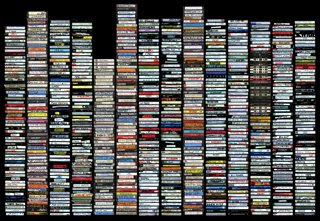
 Unspecified Non-Bizarre Delusion
Unspecified Non-Bizarre Delusion (249 Facts), 2003, LightJet print mounted to Sintra and Plexiglas, h 24” x w 36”, destroyed. Image: double page spread in
Flyer, magazine, h 4” x w 6”
In
Unspecified Non-Bizarre Delusion, the artist traveled 2,790 miles from NJ to CA as part of a fictional fact-finding mission called “The Redondo Beach Fact Finding Mission” (RBFFM). In late December of 2002, the RBFFM representative began at his childhood home in Maplewood, NJ and traveled approximately 11 miles on skateboard to Newark Airport. An aircraft was boarded and the representative was transported to Long Beach Airport in Long Beach, CA, whereupon he traveled on skateboard approximately 25 miles to Redondo Beach, CA and delivered a vintage copy of Black Flag’s 1983 release
My War. Total distance traveled: 2790.96 miles. All 249 images made are presented, unedited, and in chronological order. The entire project with images, maps, and notes was published in
Flyer, a miniature magazine measuring only h 4” x w 6”.
The RBFFM examined a number of East Coast teenage projections of an idealized punk rock/skateboarding utopia onto the ordinary location of Redondo Beach, CA. The RBFFM studied the ability of an individual to retrieve information of past events and experiences learned from secondhand sources and contrast it with the present reality. Essentially, a thorough autopsy of a dream was performed.





















